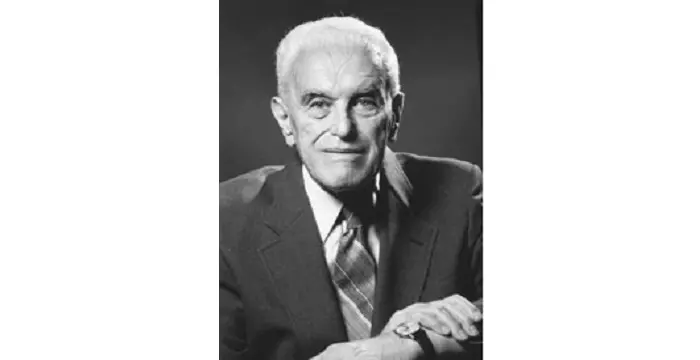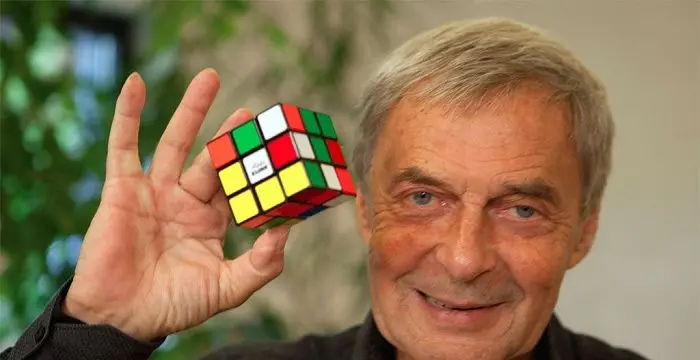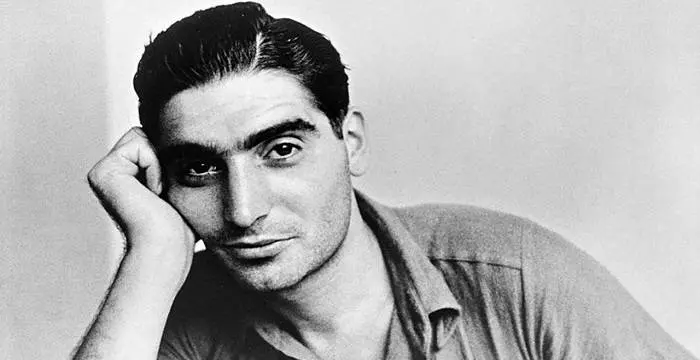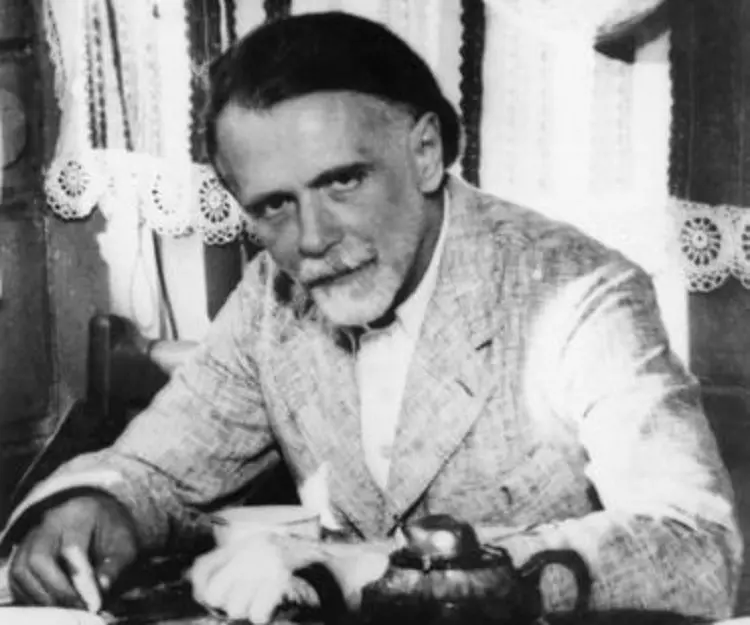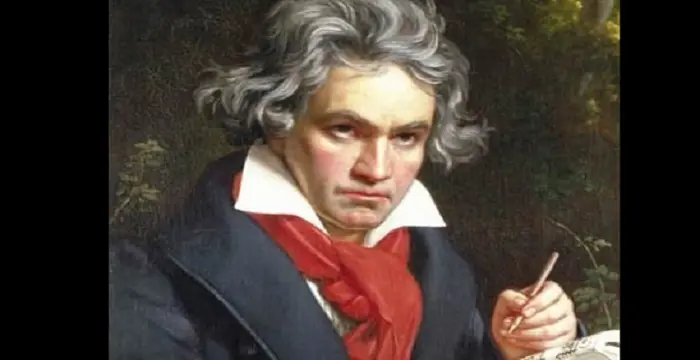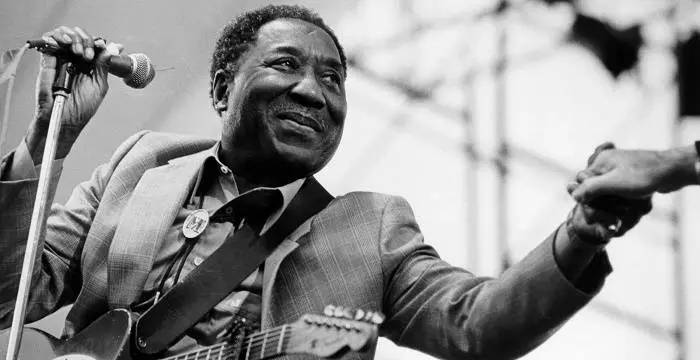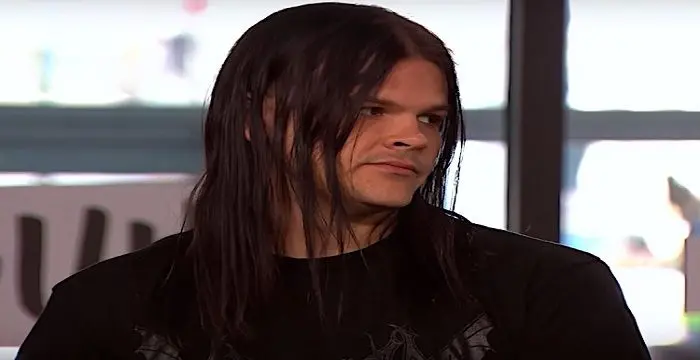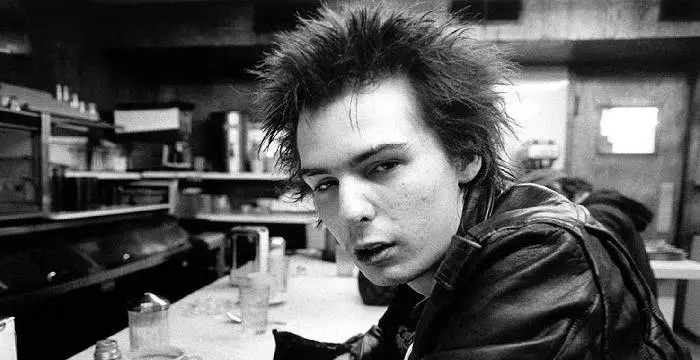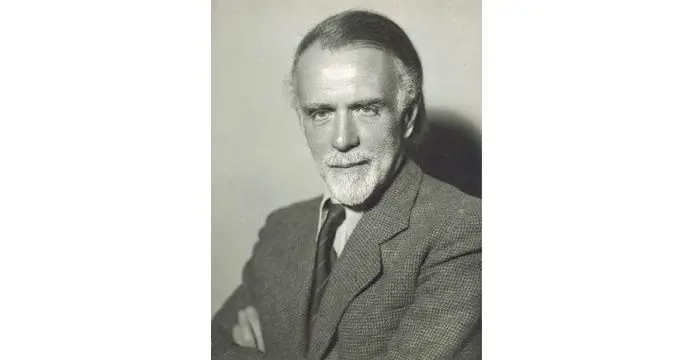
Zoltan Kodaly - Hungarian Musicians, Timeline and Personal Life
Zoltan Kodaly's Personal Details
Zoltan Kodaly was a renowned Hungarian composer, ethnomusicologist and educationist famous for his innovative musical education methods
| Information | Detail |
|---|---|
| Birthday | December 16, 1882 |
| Died on | January 1, 1970 |
| Nationality | Hungarian |
| Famous | Musicians, Composers, Hungarian Men, Hungarian Musicians |
| Spouses | Emma Gruber (m. 1905–1958), Sarolta Péczely (m. 1959–1967) |
| Universities |
|
| Birth Place | Kecskemét |
| Gender | Male |
| Sun Sign | Sagittarius |
| Born in | Kecskemét |
| Famous as | Composer |
| Died at Age | 87 |
// Famous Hungarian Men
John C Harsanyi
Read on to know the profile, career, important works, contributions and timeline of the famous American economist and Nobel Laureate, John C Harsanyi.
Erno Rubik
The famous inventor and educationist, Erno Rubik is known world-wide for his invention the ‘Rubik’s Cube’. To know more about the childhood, profile, timeline and career of this famous architect-inventor read on.
Robert Capa
Robert Capa was a Hungarian war photographer and photojournalist who later became a naturalized US citizen. This biography of Robert Capa provides detailed information about his childhood, life, achievements, works & timeline
Zoltan Kodaly's photo
Who is Zoltan Kodaly?
A prominent figure in the Hungarian musical world, Zoltan Kodaly is best remembered as a composer, ethnomusicologist and educationist. Along with his compatriot and friend Bartok, he pioneered the integration of folk music and elevated the international status of Hungarian music through dances and folk songs. He popularized folk music among Hungarians, who accepted them with both hands, in spite of criticism as ‘uncultured’ and ‘unrefined’. Unlike his friend Bartok, he kept in constant touch with the people. His authority as a musical pedagogue is as high as his authority as a composer. It was his innovative music education techniques, which inspired his associates to develop Kodaly method, which exploited the natural music talents of children. Even today, this method is extensively employed to teach the basics of music. He also composed an enormous quality of choral exercises, which was intended explicitly for amateur singers to hone their techniques. His contributions to the musical world in general and Hungarian music in particular are so high that it will remain forever as long as people love to sing.
Biography detail
Zoltan Kodaly’s Childhood and Early Life
Zoltan Kodaly was born in Kecskemét on 16 December 1882 to Frigyes and Paulina Kodaly. His parents were amateur musicians and his father was a station master by profession. His father was a violinist and his mother played piano. Though he hailed from a musical family, Kodaly’s initial interest was towards literary studies. As his father worked as a railway official, their family had a rather wandering existence. From 1884 to 1891, his family lived in Galánta and then moved to Nagyszombat, where Zoltán took lessons in violin, piano, viola and cello and sang in Cathedral choir, which introduced him to the importance of choral singing. He also explored the scores in Cathedral music library and taught himself the cello to make up the numbers for his father’s domestic quartet evenings.
Education
Young Zoltan's early exposure to German classics was taken over by the keen interest he developed in the folk heritage of Hungary. In 1897, at the age of 15, he attempted his debut composition in school orchestra. In 1900, after graduation from Archiepiscopal Grammar School in Nagyszombat, he joined Budapest University where he studied Germanic and Hungarian Literature. However, the call of music was so powerful for him that he enrolled at the Franz Liszt Academy of Music in Budapest where Hans Koessler taught him composition. The studying of compositions was quite fruitful for Kodaly and he received a diploma in the subject in 1904. In 1905, he attained his second diploma in music education. It was during this time that he met fellow composer Béla Bartók, whom he took under his wing and introduced to some of the techniques included in folk song collection. The two students developed interest in Hungarian folk music. This interest was part of a big movement in Hungary as the desire to discover the true culture of the country, which was under German domination for over 100 years, was burning in the hearts of Hungarians. Kodaly and Bartók knew that what was considered to be Hungarian folk music was actually a kind of gypsy music, a commercial popular music played by gypsies in cafes and theaters.
He seriously studied folk tales, which made Zoltan a key figure in the field of ethnomusicology. In 1905, Zoltan along with Bartok made a visit to remote villages to collect songs, recording them on phonograph cylinders. In 1906, he wrote a thesis on Hungarian folk song. The two became lifelong supporters and friends of each other’s music. In 1906, a Ph.D. crowned his academic career for his structural analysis of Hungarian folk song.
After having gained his Ph.D., Zoltan went to Paris to study. There he was greatly influenced by the music of Claude Debussy and Brahms. In 1907, he moved back to Budapest and become a professor at the Academy of Music. However, he continued with his folklore collecting expeditions throughout World War I without much disturbance. Throughout this time, he composed many works, including string quartets, sonata for cello and piano, sonata for cello polo and his duo for violin and cello. All these works were original in form and content and were a perfect blend of sophisticated mastery in Western European style of music including classical, late romantic, impressionist and modernist tradition. The works were also the reflection of his in-depth knowledge and respect for folk music of Hungary, Slovakia, Bulgaria, Albania and other Eastern European countries. The outbreak of World War I and the geographical changes, which followed, stood as an obstacle in his public success.
Career
In 1910, Kodaly and Bartók jointly did concerts with young musicians. Though their efforts were criticized by the critics, the dates of these concerts are celebrated as the birth of Hungarian music. It was during this time that Kodaly married Emma Sandor who was a gifted musician and translator and was almost 20 years older than Kodaly. As Kodaly and Béla Bartók de-emphasized European musical culture and glorified Hungarian musical traditions, their works were not immediately accepted by the establishment who disowned and branded this kind of music as ‘unrefined’ and ‘uncultured’. This did not prevent him from incorporating actual folk melodies in many of his compositions. Between 1921 to 1937, Kodaly and Bartók published two significant books on the subject of Hungarian folk music. The quality and scholarship of these works caused the critics to acknowledge them, which led to the books being recognized worldwide in the field ethnomusicology.
He did not have much success until 1923 when his work ‘Psalmus Hungaricus’ was premiered at a concert to celebrate the 50th anniversary of the union of Buda and Pest. Following this success, he travelled all over Europe to conduct music performances. The work was based on Hungarian melodies and set in the 20th century. His music resembled that of Bartok’s, but was never as violent in its use of dissonance. His significant work, which rose to fame, was Hary Janos (1932), which is a folk-based opera. He also wrote an orchestral suite based on this opera.
Zoltan Kodaly was quite interested in issues regarding music education, wrote numerous materials on music education techniques, and worked on large amount of music on children. In 1935, along with his friend and colleague Jeno Adam, he initiated a long term project to improve the teaching of music in lower and middle schools. This work led to the publication of several other books and he made a deep impact on musical education both inside and outside his country. The Hungarian music education technique, which was developed in 1940’s, became the basis for what was later known as ‘Kodaly Method’. His role in this was not to write a comprehensive method, but set up certain principles to be followed in music education. Zoltan Kodaly continued his compositions of professional ensembles with the works ‘Dances of Marosszék’ (1930),’ the Dances of Galanta’ (1933), ‘the Peacock Variations’ (1939) and ‘Missa Brevis’ (1944) are among his well-known works.
Zoltan remained in Budapest throughout World War II, retiring from teaching in 1942, at the age of 60. It was during this time that he toured England, United States, and Soviet Union as a conductor of his own works. He received many awards and honors and continued his efforts to improve Hungarian music education by writing new works for children and adult choirs.
Kodaly’s last years were great success as he was treated as a national hero in his own country. In 1945, he became the president of Hungarian Arts Council and in 1962, received the order of Hungarian People’s Republic. The other positions which he held include presidency of International Folk Music Council and honorary presidency of International Society for Music Education. In 1966, Kodaly Quartet, a string quartet that was named in Kodaly’s honor, was formed. He died in Budapest in 1967 as one of the most prominent figures in Hungarian Arts.
Achievements
Zoltan Kodaly was a key figure in the field of music education. He believed that music belonged to everyone and to attain the higher level of musical understanding, the musical training must be developed within school systems. He devoted his time for music education, especially, for improving the music education of Hungarian children. As folk song was the most accessible song to people and in the songs for children, he suggested it is the place where the education must start. Writing plenty of essays in support of music education, he also composed new choral works, which were extensively used as materials in music education programs within the school system.
All through his life, Kodaly worked extensively to bring music to the people, and was active in reforming the way in which music was taught in Hungarian schools. He introduced a method of sight singing for teaching young children, based on folk songs. The approach became a huge success and became popular even outside Hungary. After World War II, it was practiced in schools in United States and England where workshops on Kodaly method set up for teachers.
Contributions And Works
Orchestral
- Summer Evening (1906, rev. 1929)
- Háry János Suite (1926)
- Dances of Marosszék (1930)
- Dances of Galanta (1933)
- Peacock Variations (1939)
- Concerto for Orchestra (1939)
- Symphony (1930's - 1961)
Chamber/Instrumental
- Intermezzo for String Trio (1905)
- String Quartet No. 1 (1909)
- Cello Sonata (1910)
- Duo for Violin and Cello (1914)
- Sonata for Solo Cello, (1915)
- String Quartet (1917)
- Serenade for 2 Violins and Viola (1920)
Operas
- Háry János (1926)
- The Transilvanian Spinning Room (1932)
Legacy
The ‘Kodaly Method’ of school music education was developed in the middle of 20th century in Hungary. It led to vast improvements in musical instructions throughout the world. Though Kodaly did not develop the method, his educational philosophies inspired his associates who developed the system.
Awards and Accolades
- Order of Merit by Hungarian government, 1942
- A string quartet named Kodaly Quartet was formed in honor of Kodaly, 1966
// Famous Composers
Ludwig van Beethoven
Ludwig Van Beethoven was one of the greatest composers the world has ever had. Check out this biography to know about his childhood, family life, and achievements.
Emina Jahović
Emina Jahović Sandal is a Serbian model, actress and singer-songwriter. Know more about her childhood, life, career, achievements and timeline in this biography.
John Denver
John Denver, a famous American singer-songwriter and activist, is remembered for songs like Take Me Home, Country Roads and Annie's Song. To know more about his childhood, career, profile and timeline read on
// Famous Musicians
Ted Nugent
Ted Nugent is a hard rock musician known for his hits ‘Stranglehold’ and ‘Cat Scratch Fever’. This biography of Ted Nugent provides detailed information about his childhood, life, achievements, works & timeline.
Muddy Waters
Muddy Waters was a blues musician referred to as the 'father of modern Chicago blues.' Check out this biography to know about his childhood, family life, achievements and fun facts about him.
Travis Bacon
Travis Bacon is an American musician and actor, better known as the son of veteran actors Kevin Bacon and Kyra Sedgwick. Find more about his family, birthday, etc.
Andrew Taggart
Andrew Taggart is an American DJ who gained fame as one half of the famous DJ duo ‘The Chainsmokers,’ alongside Alex Pall. Let’s take a look at his childhood, family, personal life, career, achievements, etc.
Mike Love
One of the famous members of ‘The Beach Boys’, Mike Love is an American singer, musician and lyricist. Check out this biography to get more detailed information on his life.
Sid Vicious
Sid Vicious was an English musician known for his work with the band ‘Sex Pistols’. Check out this biography to know about his childhood, family life, achievements and fun facts about him.
Zoltan Kodaly's FAQ
What is Zoltan Kodaly birthday?
Zoltan Kodaly was born at 1882-12-16
When was Zoltan Kodaly died?
Zoltan Kodaly was died at 1970-01-01
Where was Zoltan Kodaly died?
Zoltan Kodaly was died in Budapest
Which age was Zoltan Kodaly died?
Zoltan Kodaly was died at age 87
Where is Zoltan Kodaly's birth place?
Zoltan Kodaly was born in Kecskemét
What is Zoltan Kodaly nationalities?
Zoltan Kodaly's nationalities is Hungarian
Who is Zoltan Kodaly spouses?
Zoltan Kodaly's spouses is Emma Gruber (m. 1905–1958), Sarolta Péczely (m. 1959–1967)
What was Zoltan Kodaly universities?
Zoltan Kodaly studied at University of Budapest, Franz Liszt Academy of Music, Budapest
What is Zoltan Kodaly's sun sign?
Zoltan Kodaly is Sagittarius
How famous is Zoltan Kodaly?
Zoltan Kodaly is famouse as Composer
